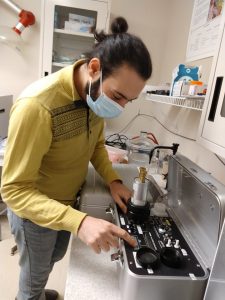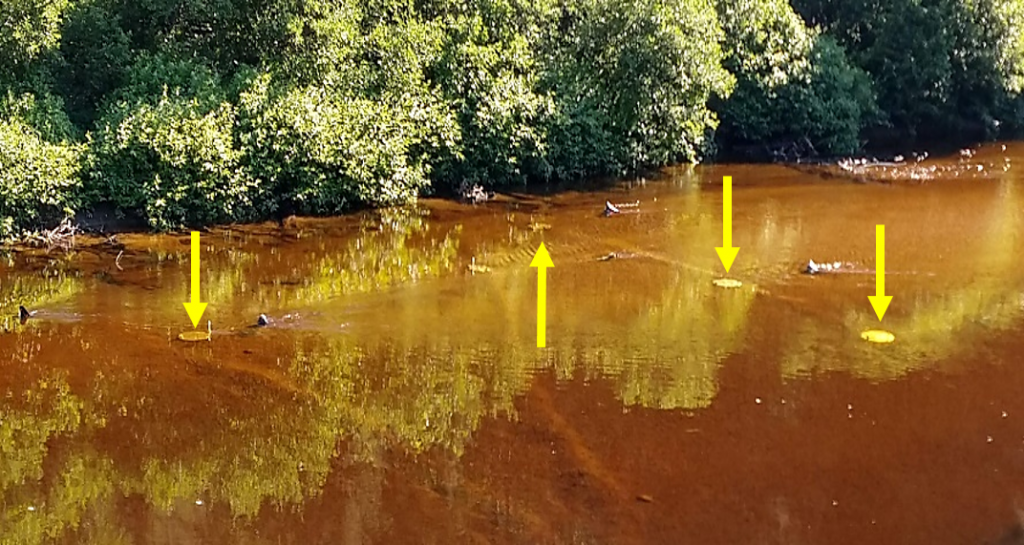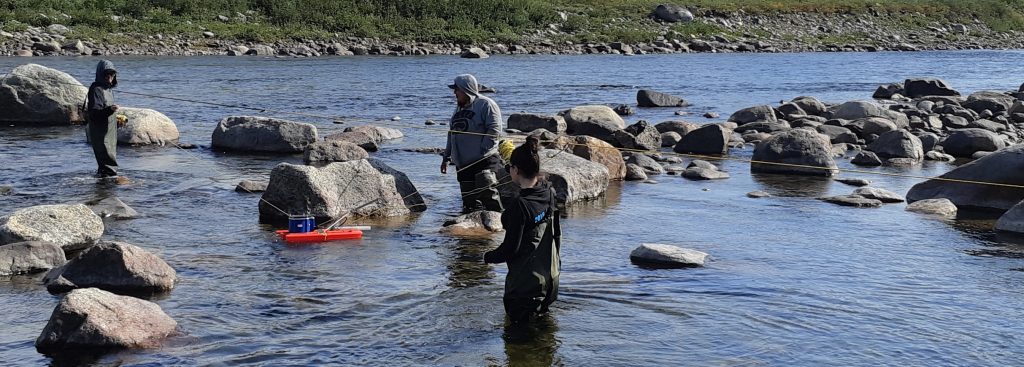In the summer of 2019, student Milad Fakhari and professor Richard Martel conducted fieldwork on the Berard River with the help of members of the Tasiujaq community. The objective was to collect data that would confirm the presence of groundwater resurgence in the Berard River observed on aerial thermal images. These groundwater resurgences act as thermal refuges for the river’s fish in search of cooler water in summer or warmer water in winter.

Thermal aerial imagery of the Berard River and its lateral channel on which the piezometers were added

The team has installed piezometers (stainless steel pipes) in the ground, in the channel parallel to the Berard River and on the shoreline. These piezometers allow the installation of thermographs that record the temperature of the groundwater throughout the year. They also allow for the collection of groundwater samples.

In the summer of 2021, Milad and Professor Jasmin Raymond worked in collaboration with the Landholding Corporation of Tasiujaq to organize the fieldwork. They started their fieldwork by collecting groundwater samples from the existing piezometers. They also took water samples from the Berard River and soil samples.
These samples were brought back to the INRS-ETE laboratory to measure the hydraulic and thermal properties and to analyze chemical compounds such as metals and anions.


While the team was still on the field, they took measurements of radon concentration in the water at several locations along the Berard River. Since radon is a gas that originates from many types of geological substrates and is most concentrated in groundwater, it is used as a tracer to confirm the presence of groundwater.
The team then retrieved the pressure recorder and thermographs installed two years earlier and the valuable water level and temperature data recorded on them. Afterwards, they removed the piezometers from the ground using a tripod and a chain block.

They installed seepage meters temporarily in the bed of the Berard River in order to measure the amount of water that infiltrates into them. That amount of water accumulating in the infiltrometers allows the detection and evaluation of groundwater resurgence in the river.

The team also measured the flow of the Berard River using a Doppler flow meter (ADCP). This instrument was placed on the surface of the water and was traversed along the width of the river following a transect perpendicular to the current. The measurements were recorded on computer, during its displacement.

All this valuable data will be used to model the behaviour of the Berard River and to simulate the effect of climate change scenarios. This modeling will allow Milad to predict the temperature variations of the thermal refuges and the impacts they will have on the fish of the Berard River. These salmonid fish are caught and consumed by the community of Tasiujaq. It is therefore of great importance to study this magnificent river and its thermal refuges.

If you want to know more about Milad Fakhari, Jasmin Raymond and Richard Martel’s research project, click here.

